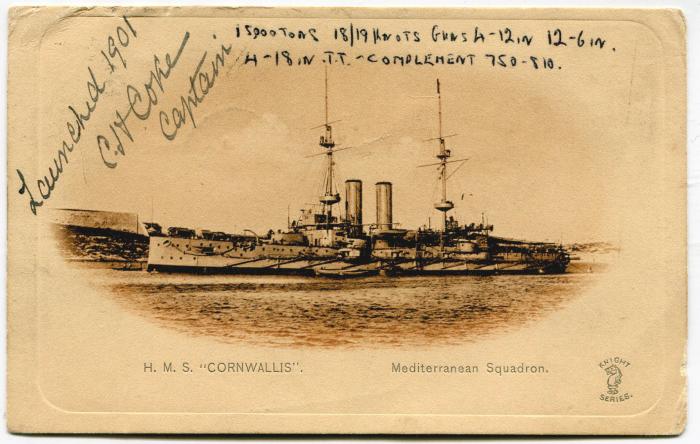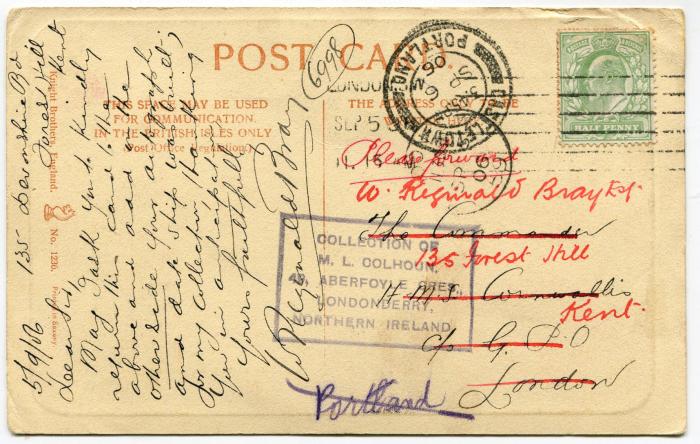Information/Autograph request
Picture postcard sent by Bray to The Commander, HMS Cornwallis, c/o GPO, London on 5th September 1906 asking for his autograph and some information to be supplied.
Signed by Captain Charles H. Coke.
Admiral Sir Charles Henry Coke KCVO (2 October 1854 - 23 February 1945) was a Royal Navy officer who served during the First World War.
Coke joined the Royal Navy on 7 April 1868 when he entered the Britannia Royal Naval College, in 1872 was appointed a midshipman on the corvette HMS Druid. Coke served during the Third Anglo-Ashanti War and was present during the attack on Elmina on 13 June 1873, he was awarded the Ashantee Medal. He was appointed lieutenant on HMY Victoria and Albert on 5 September 1877. In 1880 he served on the gun-vessel HMS Fly on the China Station, returning to England two years later to do a gunnery course. In 1889 he took command of the sailing brig HMS Pilot. Promoted to Commander in 1892 he moved to HMS Active before moving on to command HMS Ganges, a boys training ship at Falmouth. He became commanding officer of the cruiser HMS Sirius in July 1899, and commanding officer of the cruiser HMS Talbot in July 1900. In February 1901 he was appointed commanding officer of the cruiser HMS Terpsichore, serving at the Cape of Good Hope Station. He went on to be commanding officer of the cruiser HMS Scylla in April 1904 and of the battleship HMS Cornwallis in January 1905.
After that Coke became Captain, Sheerness Gunnery School in January 1907, Commander-in-Chief, Coast of Ireland Station in April 1911 and commander of the Newfoundland Patrol Service in March 1917.
HMS Cornwallis was a Duncan-class pre-dreadnought battleship of the Royal Navy. Built to counter a group of fast Russian battleships, Cornwallis and her sister ships were capable of steaming at 19 knots (35 km/h; 22 mph), making them the fastest battleships in the world. The Duncan-class battleships were armed with a main battery of four 12-inch (305 mm) guns and they were broadly similar to the London-class battleships, though of a slightly reduced displacement and thinner armour layout. As such, they reflected a development of the lighter second-class ships of the Canopus-class battleship. Cornwallis was built between her keel laying in July 1899 and her completion in February 1904.


















